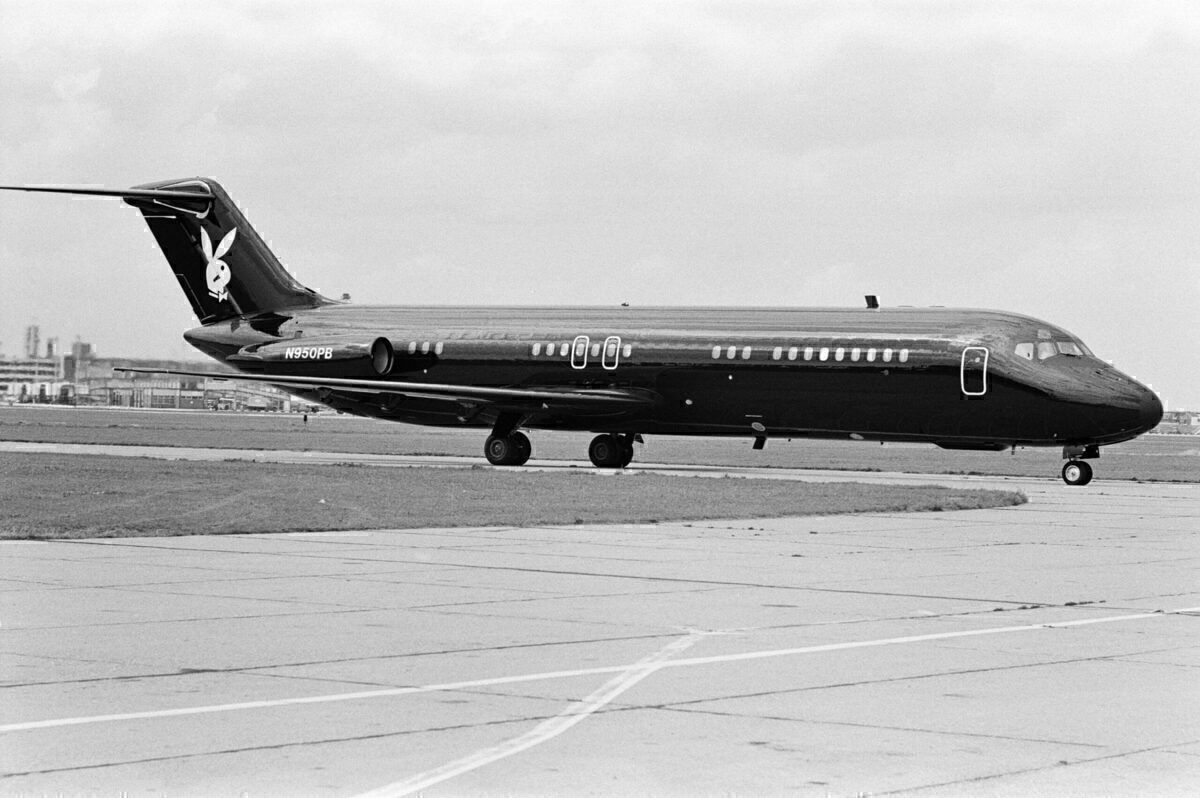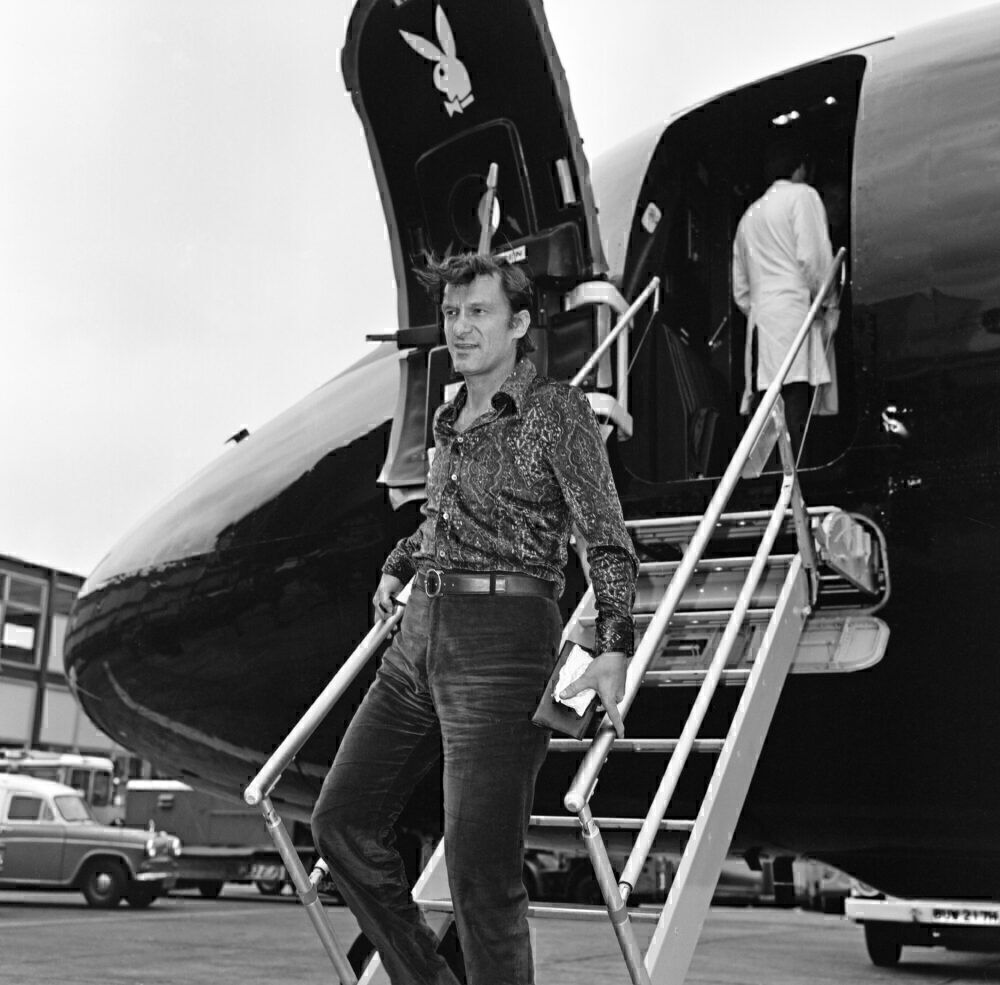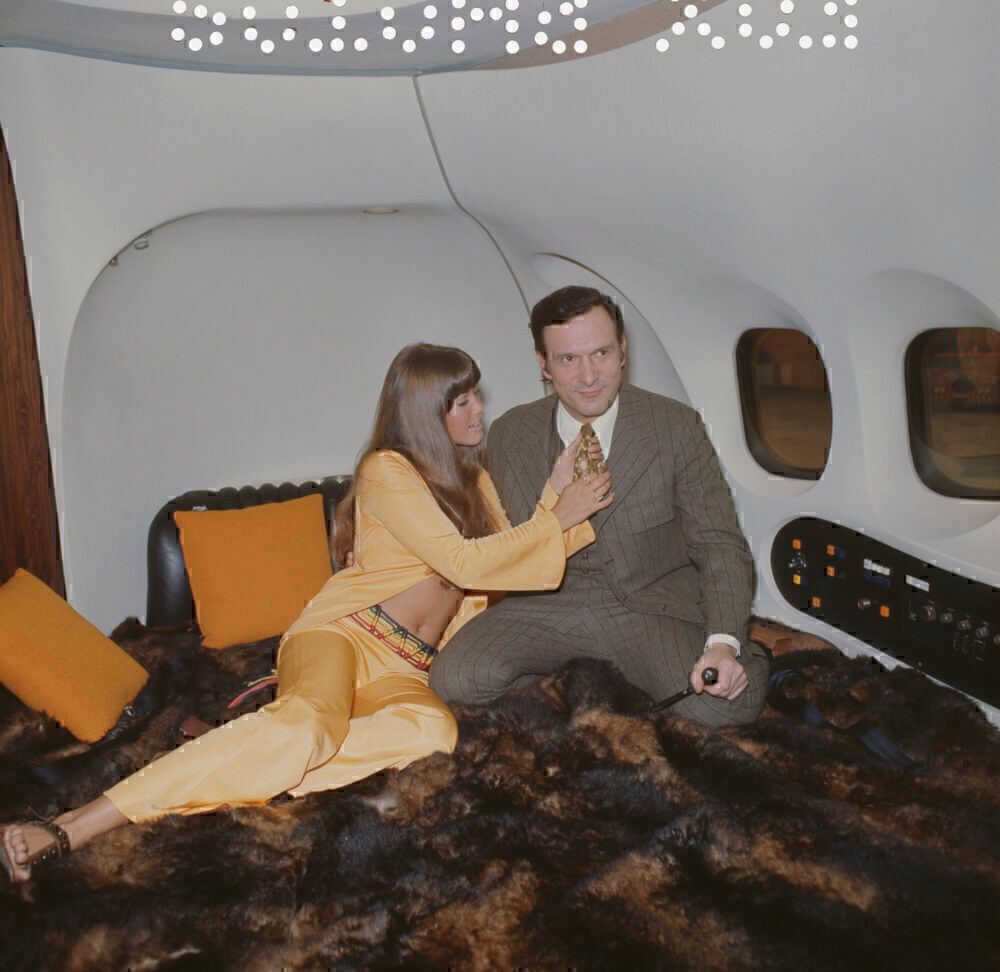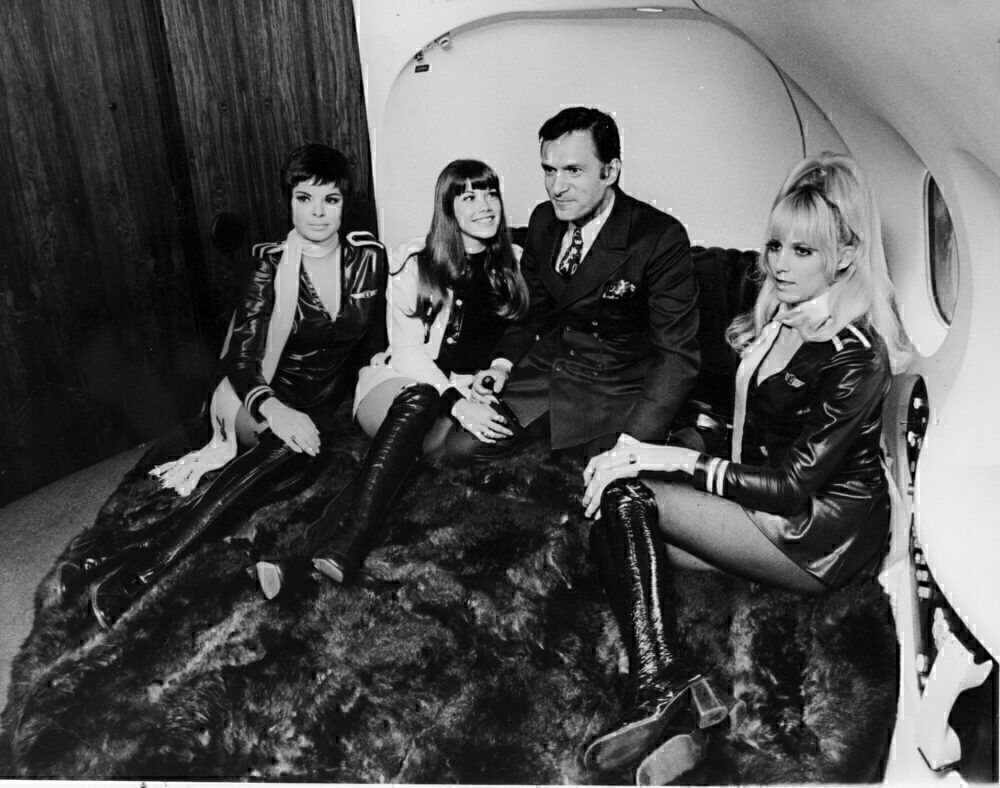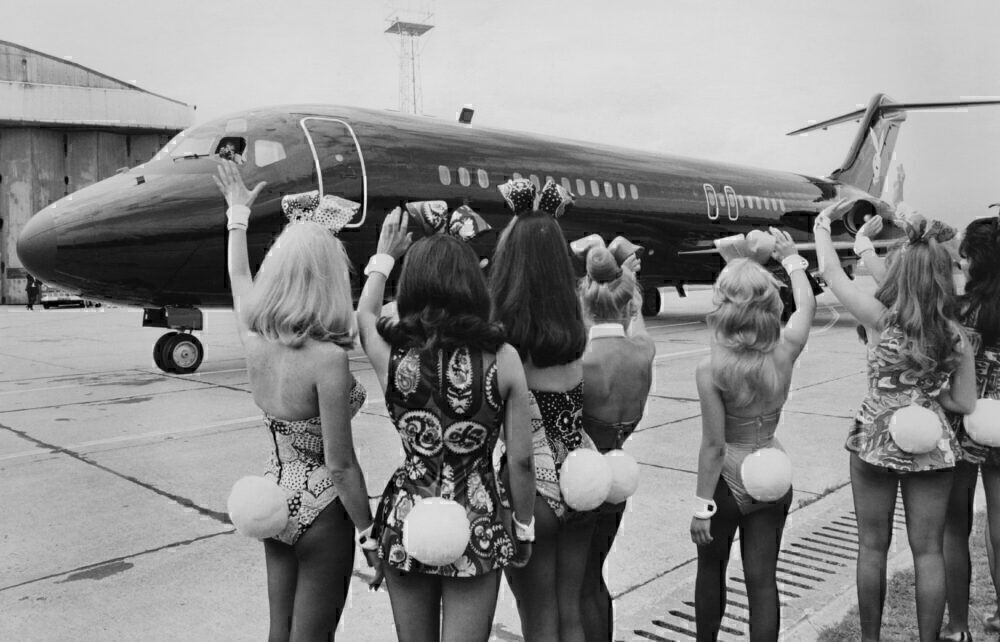The DC-9 is perhaps one of the most iconic aircraft of the late 1960s. But no single model was quite as recognizable as that which belonged to Playboy legend Hugh Hefner. His sleek, black private jet, complete with the seminal white bunny on the tail, was essentially the Playboy Mansion at 35,000 feet. But what happened to it, and where is it now?
Hefner’s ‘Big Bunny’ DC-9
Playboy founder and editor-in-chief Hugh Hefner loved life’s little luxuries. Knowing how exuberant and hedonistic his lifestyle was, it shouldn’t come as any surprise that, in the late 1960s, he commissioned his own custom DC-9 jet.
Delivered straight from the manufacturer in February 1969, at a cost of around $5.5 million (about $40 million in today’s money), Hefner set about turning the aircraft into a flying Playboy Mansion. The base model was a DC-9-32, the stretched variant of the Douglas plane, which was, at the time, a state-of-the-art aircraft.
Nevertheless, Hefner had a million and one ways to improve his flying toy. Having secured permission to paint it all black, an unusual color at the time, the DC-9 underwent a one of a kind reconfiguration on the inside.
Affectionately called the ‘Big Bunny’, Hefner had the interior kitted out with several lounges, a dining room, bathrooms with showers, and even a theatre and disco area. The design was unique, employing a modern Scandinavian twist for a futuristic appeal.
While the unusually encompassing circular waterbed in Hefner’s suite was primarily for, er, partying, it was also his office in the sky. Under the window, a sweeping console housed all the comfort and connectivity controls that were available at the time, letting the Playboy boss mix work and pleasure with the utmost convenience.
Guests on the jet were attended to by cabin crew Hefner affectionately called his ‘Jet Bunnies’. Hand-picked from Hefner’s clubs in LA and Chicago, the girls were trained by Continental Airlines before starting work on the plane. Their outfits, designed by Walter Holmes, included leather mini dresses, go-go boots, and occasionally bunny ears and tails.
Stay informed: Sign up for our daily aviation news digest.
Saying goodbye to the Big Bunny
While the DC-9 was a beloved possession of Hefner at the time, the cost of maintaining such a lavish flying palace was hard for Playboy to stomach. The crunch came in the mid-1970s when the magazine began to fall out of favor.
Hefner had bought the Playboy Mansion in 1971, and by 1974 he was no longer dividing his time between Chicago and LA, so the need to have his own plane had declined. Now spending more time in his Mansion and with less travel to do, Hefner decided to let the plane go.
According to Planespotters.net, N950PB was sold to Omni Aircraft Sales in March 1976, and the following month it arrived with Linea Aeropostal Venezolana. Four years later, in 1979, it was moved on to fly with Aeromexico, where it continued to operate until 2004. At the point of retirement, it was ferried to Guadalajara for storage.
But this was not to be the end of the Big Bunny. In 2008, it was dismantled and moved to a park at Cadereyta de Montes, Querétaro, Mexico. There it remains to this day on display, where it is used as an educational tool for the city's children.
From big black sex symbol to educational tool for children – the Big Bunny has certainly had an interesting life.

